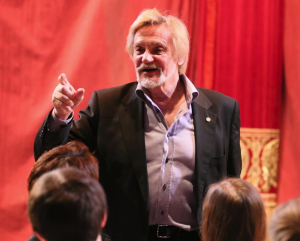
Vladimir Vasiliev
Moscow and St. Petersburg are famous for their ballet companies. But the city of Perm, just west of the Ural Mountains, has an excellent ballet company too. It also hosts an annual Diaghilev Festival and the biennial Arabesque Ballet Competition. It is this last, which is led by the great heroic dancer of the Bolshoi’s storied past, Vladimir Vasiliev, that brought me to Perm.
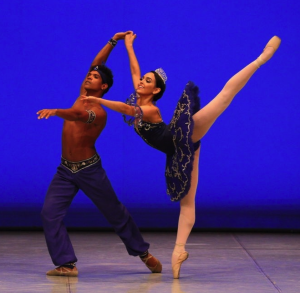
Diego Cunha and Amanda Gomes, from Brazil
This year Arabesque, which ran from April 3 to 13, attracted dancers from across Russia and countries as far flung as Japan, Korea, Brazil, Venezuela, Portugal, Belgium, Austria, Kazakhstan, Turkey, South Africa and the U. S. The International Jury included the likes of Nina Ananiashvili and Nikolai Boyarchikov. I served on a second group, the Press Jury, for the first half of the series.
Each participant showed two classical variations if they entered as a soloist, or a pas de deux if they entered as a couple. If they made it past Round I, they had to show more classical, plus a contemporary work. Certain pieces were also submitted for a prize in choreography. The level, both technically and artistically, was consistently very high. The whole 10-day event, including Opening and Closing Ceremonies, took place in the Perm Opera and Ballet Theatre, which was built in the 19th century with funding from Diaghilev’s grandfather. (Diaghilev grew up a few blocks away, in a large house that was also built by his grandfather.)
Of the 83 participants, two were American: Joy Womack, now dancing with the Kremlin Ballet in Moscow, and Mario Vitale Labrador, a soloist with the Mikhailovsky in St. Petersburg. I couldn’t help feeling proud of their superb, very individual, dancing, and that they were among those who won prizes. (For full results click here.)
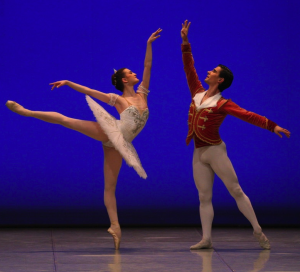
Joy Womack with Mikhail Martinyuk, both of Kremlin Ballet, in Nutcracker
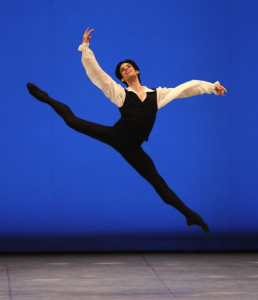
Maria Vitale Labrador, an American with the Mikhailovsky Ballet
A good many of the exciting dancers were from the Perm Opera Ballet Theatre, where the choreographer and wise guy known as Alexey Miroshnichenko—whenever he was around, people were laughing—has been artistic director since 2009. (You may remember his name from 2010 when he choreographed The Lady with the Lapdog at NYCB.) To hear it from the ballet masters, he’s made a difference in the level of dancing since he came. According to Jennifer Homans’ book Apollo’s Angels, the company’s high caliber dates back to World War II, when dancers from the Mariinsky decamped embattled Leningrad for Perm.
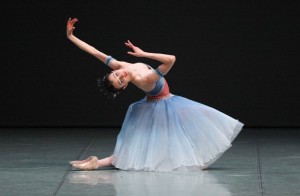
Inna Balash, of Perm Ballet, won first prize
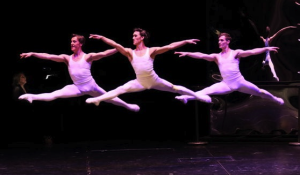
Vasiliev’s Class-Concert for Moscow Ballet
The Opening Ceremony started off with a major work by V. Vasiliev, Class-Concert (2013), along the lines of Bournonville’s Conservatoriat or similar ballets done later by the Bolshoi. But this version begins with the students racing around, showing off, taunting each other, and general mayhem. So when they take their places serenely at the barre, you’ve already seen their unruly spirits. Unnoticeable at first are an elderly man and woman (ballet masters Constantine Matveev and Svetlana Krasnova from Moscow Ballet) seated in either downstage corner, their backs to us. After all the bravura displays of the youngsters, the man rises and walks with a cane toward the woman. She goes to comfort him. They seem to reminisce about their dancing days together. He kisses her hand, but her hand slips away and she disappears from his life.
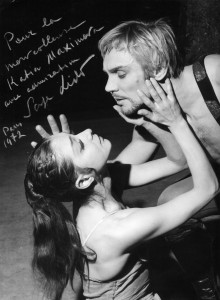
Maximova and Vasiliev in Spartacus, photo by Serge Lido, c. 1968
As all those present knew, Vasiliev lost his great love and partner, Ekaterina Maximova, in 2009. During this duet, I am sure I wasn’t the only one who found herself wiping away tears. Since 2009, this competition bears her name, so it’s officially the Ekaterina Maximova Arabesque Ballet Competition, and an image of her dancing is used to advertise the competition.
The closing work, Promised Land, by leading choreographer Radu Poklitaru, was an inventive group piece to Chopin for members of the Voronezh State Opera and Ballet. At the end, several ladders descended from above and all the dancers clustered around the ladders, a few of them starting to climb up toward the heavens—or some ideal place. Unfortunately, Poklitaru could not be present as he is based in Kiev; no further details were needed to explain.
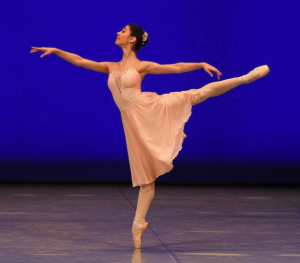
Polina Buldakova, Perm, in Tschikovsky Pas de Deux @Balanchine Trust
While watching the classical entries, we saw so many numbers by Petipa and Gorsky that it was a bracing pleasure to see two Balanchine duets—Tarantella and Tschaikovsky Pas de Deux—performed beautifully by members of the Perm Opera Ballet Theatre.
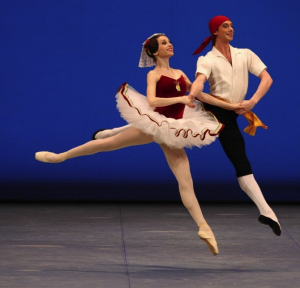
Akexandre Taranov and Eugenia Lyakova, Perm, in Tarantella @Balanchine Trust
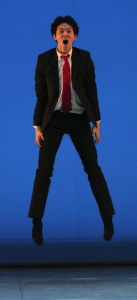
Yonen Takano, Japan
Like many competitions these days, there is also a “contemporary” component to encourage dancers to be versatile. When you are judging a ballet performance, you naturally notice imperfections. One woman’s feet are not well arched, one man’s head is square-shaped, somebody falls out of their turn. But these same dancers can be absolutely breathtaking in a contemporary piece where the main measure is full-body dancing. One 16-year-old boy, who made mistake after mistake in the ballet pas de deux, threw himself into his contemporary duet and became a dancer you’d really want to see again.
One of the high points was watching Nina Ananiashvili give class. She’s a force of nature when she teaches, constantly speaking (in two or more languages), demonstrating, correcting. She shoots out into space when showing a combination; she comes in close when correcting a dancer. She is in hyper mode, performing everything full out, including, as I saw that morning, a double tour en l’air.
I had such a good time in Perm, soaking in the history, watching the dancing, and meeting new colleagues from Russia, Germany, and Italy. It was cold and snowy but the dinners each night warmed us. If you haven’t been around when Russians start giving toasts, then you’d be in for a fun ride—especially if Alexey Miroshnichenko is the toastmaster.
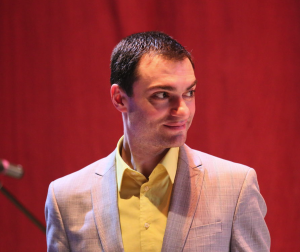
Alexey Miroshnichenko at the Closing Ceremony
Featured Leave a comment
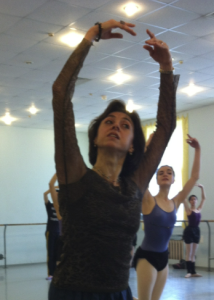
Leave a Reply